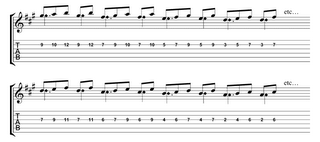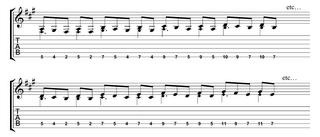I came across this interesting entry at Mixed Meters. The performance in question is by Debora Petrina—a self-identified ‘polymorphic artist.’ (Incidentally there’s an un-YouTubified version of the video in question on her site. YouTubified video.)
I’ve got no special insight into the specific whys or whats of Petrina’s performance, but what I find fascinating about this is the idea of self-consciously engineering the body and movement into the (concert) performance ritual.
Much of performance ritual gets handed down, and, perhaps in European Concert Music more than in any other tradition, without thought or critique. “Well, that’s how we’ve always done it”—never mind that, as anthropologists will tell you, such statements are (powerful) fiction. A stark example of this might be in acousmatiques in which the concert hall context and metaphor was accepted and (super-)imposed without, apparently, discussion or dissent.
I’m sympathetic to the idea that these rituals and context can (should?) be (re)examined, and the process of opening up these black boxes might reveal the unfamiliar, the unorthodox, and the complex (all good creative stuff).
I also find the self-conscious visibility of the body in this performance compelling—the body in motion as a site of creation, maybe. As discussed by Suzanne Cusick, European Concert Music has come to value the mind over the body, attempting to exorcise the body out of the Concert Hall:
The ideology of listening… strongly discourages physical engagement when listening. Even more, it discourages identification with the bodily work of performers. [my emphasis]
Cusick, 1999, p. 495.
Again, think of the ‘all ears,’ discorporate, mind-to-mind model embedded in much
acousmatiques.
As each discouragement draws the listener’s identification away from the physical, it directs it towards the imaginative mastery of all possible combinations embodied by ‘the music itself’. Socially mobile, freed from physical work, seeming to encompass all possibilities in a unified whole… a sonic experience of the middle-class self.
Ibid., p. 495.
By making the body invisible, we’re positing a vanilla, mayonnaise, ‘universal’
human, but the result is, ironically, very much gender, race, class and culture specific.
I’ve briefly touched on
the body in performance, and also on
the hegemonic, European musical orthodoxy, so I won’t go into much more detail here other than to add that the West European Concert Music Tradition “
is suspicious of the body, of real-time movement, and of the possibility of creation taking place during performance or reception.”
Okay let’s get a few things out of the way before I end up playing critic…. I have no idea if any of this is necessarily what Petrina is attempting to do, and there’s plenty of cool things about the performance. Additionally, I don’t know these Feldman scores at all. But this performance (at least this isolated sample) is
interesting: It brings up issues that are significant to those of us who do want to (re)examine and (re)engineer performance rituals, and it also flags up potential pitfalls in trying to (re)introduce and (re)activate the body into these contexts.
Here’s what I find problematic about Petrina’s performance: The dance is basically auxiliary to the movement (sanctioned to be) necessary for the ‘music itself’—that which is “free of any verbal or dramatic association or explicit social function” (
ibid., p. 493). I don’t mean that the whole should be unified or anything as silly as that. Nor do I have problems with juxtapositions and contrasts (hey, I’d use the word ‘dialectical’ if I knew what it meant). However the relationship between the ‘music itself’ and the performer remains largely uni-directional. In other words, the ‘music itself’ is allowed to dictate the parameters of movement (when and how much bodily movement is possible/practical) while the body remains servant and passive to the dictates of the ‘music itself’.
Ultimately it leaves intact the orthodoxy of European Concert Music; leaves unexamined the single-author, non-real-time, autonomous
work. Rather than blowing open the Concert Hall ritual, rather than problematizing the score or the ‘music itself,’ it reinforces these elements (in a similar way to Cage’s
4'33") by allowing the corporeal infection to be carefully quarantined to those areas that do not affect performance practice or the ‘music itself.’
I wonder, in a sense, if it is no more or less transformative than the (gentle) irreverence of
Victor Borge (I don’t mean that as an insult at all).
…Hey, but I could be wrong. (Boy, do I hate playing critic.)
references:
Cusick, Suzanne (1999), ‘Gender, Musicology, and Feminism’ in Nicholas Cook and Mark Everist (eds) Rethinking Music (Oxford: Oxford University Press).updates:
03–28–07: Add link to YouTube video.






